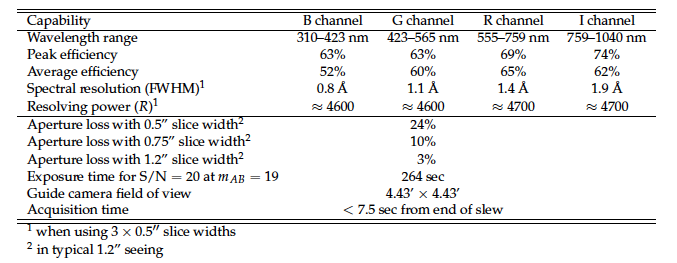The Kavli Institute for Astronomy and Astrophysics and the Department of Astronomy at Peking University, in collaboration with Caltech, the National Astronomical Observatory of China (NAOC), and the Nanjing Institute for Astronomical Optics and Technology (NIAOT), is funding the design and construction of the Next Generation Palomar Spectrograph (NGPS). The PI of NGPS is Evan Kirby (Caltech), and the co-PI is Luis C. Ho (KIAA/PKU). Support for NGPS from China has been provided by funds from PKU and an instrumentation grant (PI is Xuebing Wu) from the National Science Foundation of China.
Scheduled for first light in late 2021, NGPS is a general-purpose, visible-light (310-1040 nm), medium-resolution (R < 4500), single-object, long-slit spectrograph being developed for the 5.1-meter Hale Telescope at Palomar Observatory, in California, USA. It will replace the current Double Spectrograph (DBSP), which has been in operations since the early 1980s and is the workhorse optical spectrograph on the Hale Telescope (Figure 1). The DBSP, designed in the late 1970s, has low optical efficiency compared to state-of-the-art optical spectrographs on other mid-to-large aperture telescopes; it is also difficult and inefficient to operate because it lacks many modern electrical controls.

Figure 1: The DBSP (lower-right) on the Hale 5m Telescope at Palomar Observatory.
Table 1: Summary of NGPS Capabilities

The capabilities of NGPS are summarized in Table 1. After a thorough conceptual design study, the final configuration of NGPS is a four-arm (B, G, R, and I channels; Figure 2) spectrograph equipped with a three-way adjustable slicer (Figure 3) at the focal plane, which significantly improves the traditional trade-off between spectral resolution and slit losses. NGPS has minimal moving parts and fixed volume phase holographic (VPH) gratings. Coatings are optimized separately for each channel, and each VPH grating is operated near the peak of its respective blaze function. The overall throughout of NGPS matches or exceeds that of the most efficient spectrographs currently available at other telescopes (Figure 4). The instrument is designed to be simple to use and highly reliable. NGPS, although merely a single-object long-slit spectrograph, fulfills the needs of a wide range of Galactic and extragalactic observers of the Palomar user community.

Figure 2: NGPS instrument overview showing the slicer, structure, spectrograph optics, and detector cryostats for the four channels. The acquisition camera and guide camera are not shown.

Figure 3: The three-way slicer minimizes slit losses while maintaining a high spectral resolution.

Figure 4: Predicted open-slit optical throughput of NGPS compared to the measured and expected optical throughput of selected spectrographs at other telescopes.